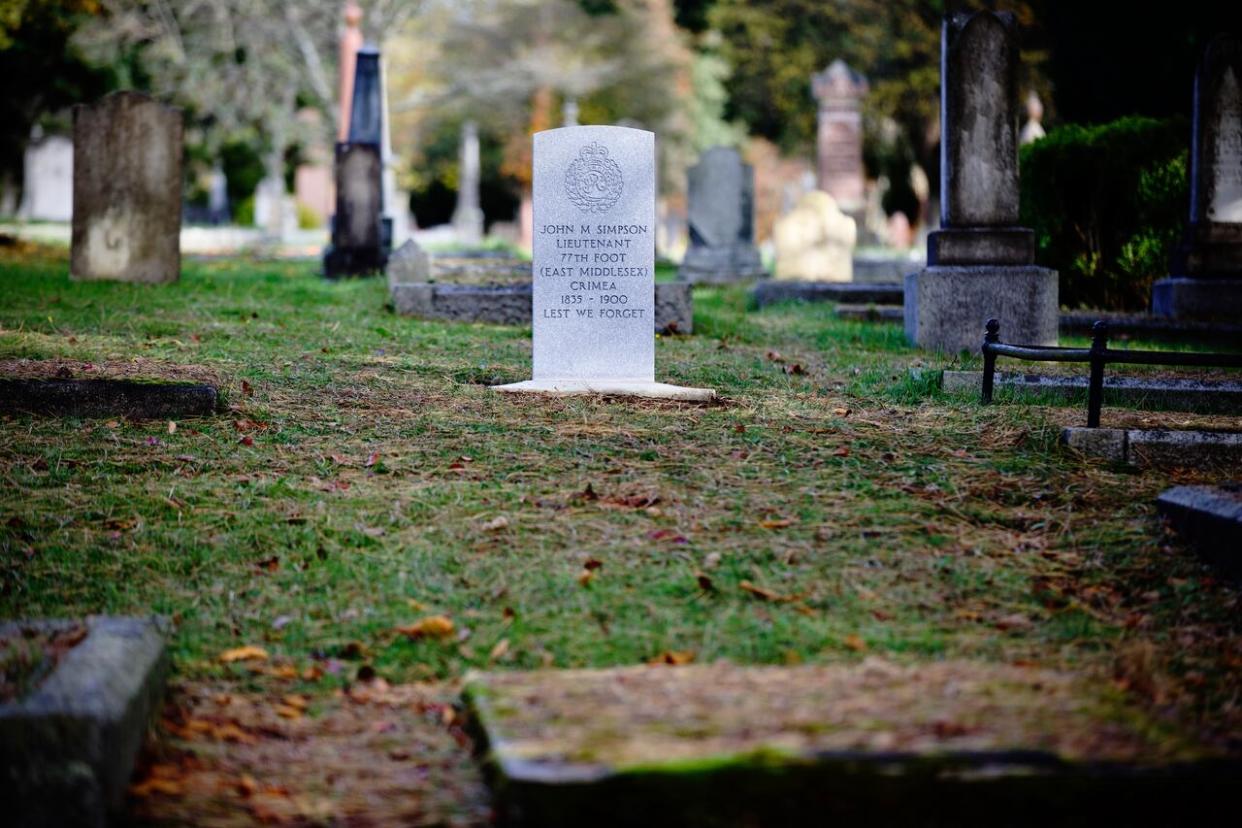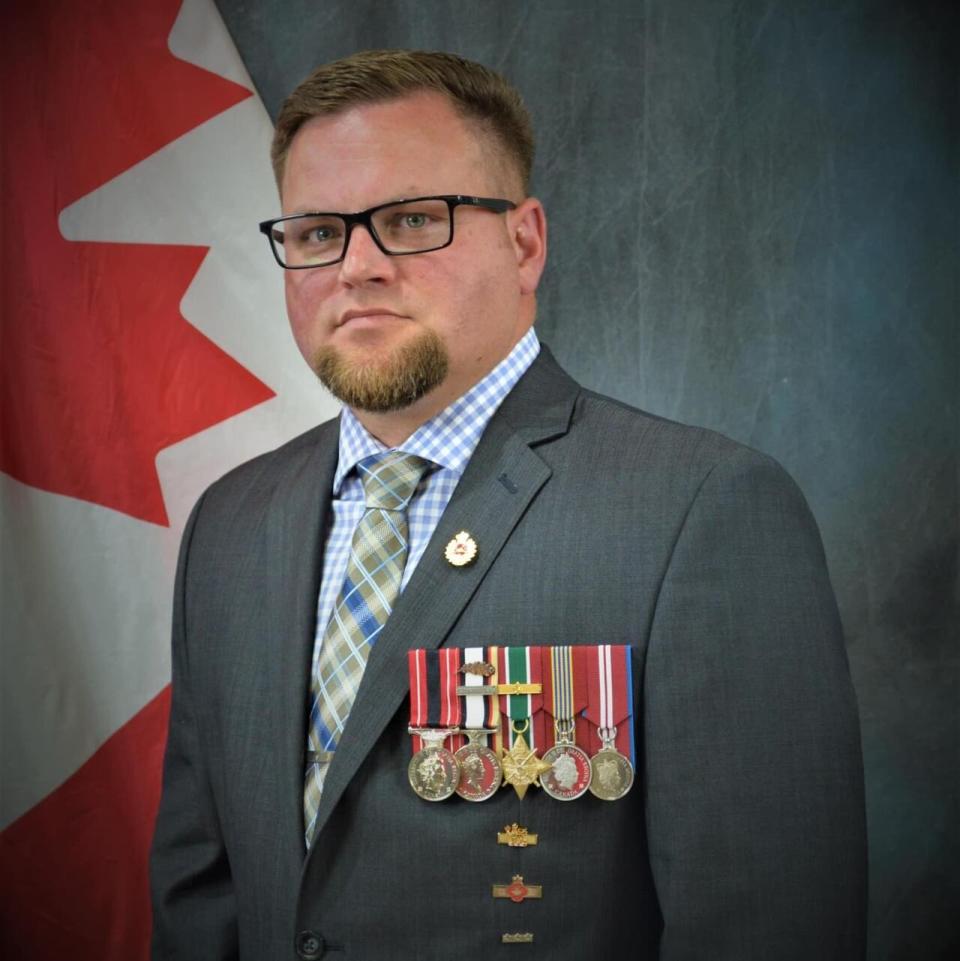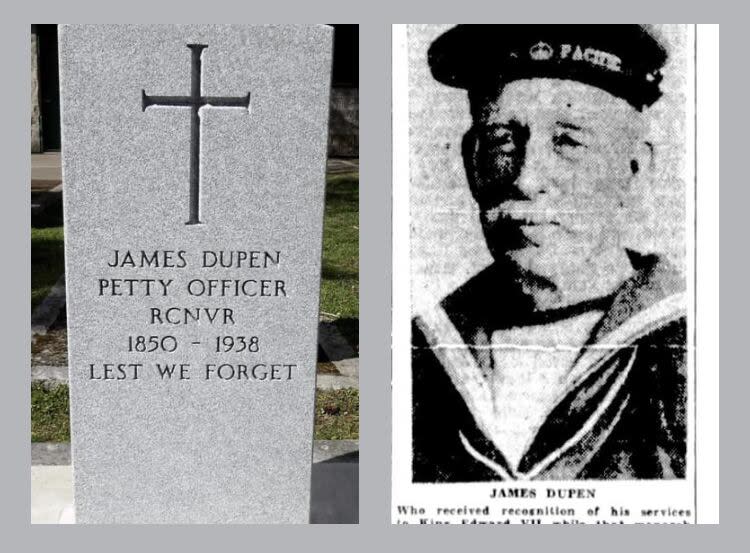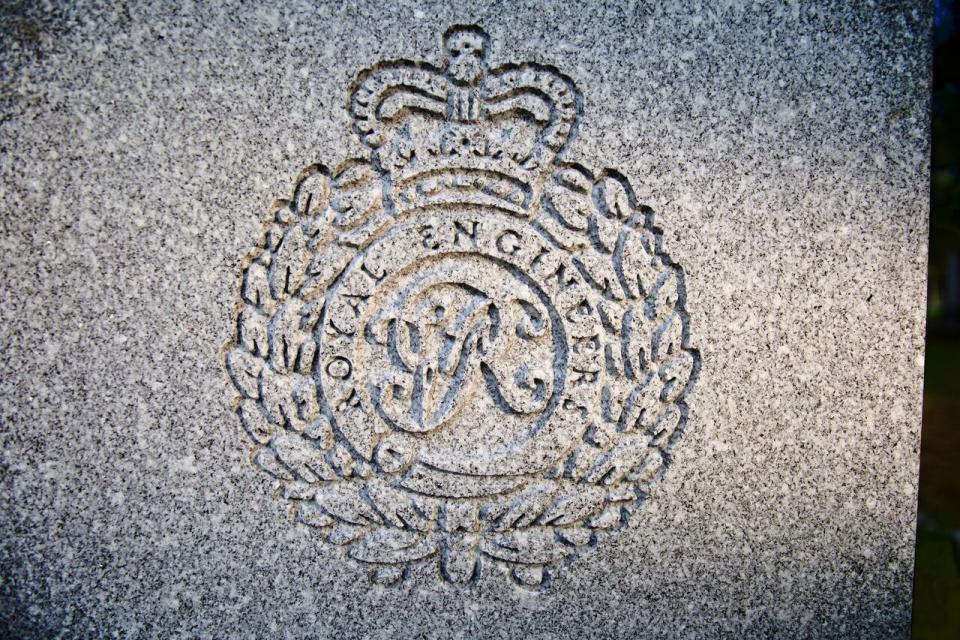Canadian veteran who served in Afghanistan finds healing in identifying unmarked graves of soldiers

A Canadian veteran who served in Afghanistan has made it his life's mission to provide proper grave markers for those who served in Canada's military.
For the last six years, Kyle Scott has been researching unmarked graves of soldiers interred in cemeteries across Alberta and B.C.
Scott, who hails from Whitecourt, Alta., served in the Canadian Armed Forces for seven-and-a-half years as a combat engineer. He was deployed to Afghanistan twice, in 2004 and 2006, before receiving a military citation and discharge from military service in 2008.
Now a service officer for the Royal Canadian Legion in Whitecourt, the 41-year-old spends time visiting graves of soldiers to see if they need maintenance and note those that are missing a headstone.
Over the last couple of years, he has been working to identify veterans buried in Victoria's Ross Bay Cemetery.
The seaside cemetery has special meaning for him, Scott told CBC's All Points West host Jason D'Souza.
"My mother's side of the family is from Victoria," he said. "They lived about two blocks from Ross Bay."
Scott said hundreds of veterans are buried in the cemetery, many in unmarked graves in empty grassy areas.

Kyle Scott, a veteran of the Canadian Armed Forces, has been researching and maintaining veterans' grave sites to honour their sacrifice. (Submitted by Kyle Scott)
He says he has identified 290 veterans buried there and 140 new military markers have been erected on grave sites that were previously unmarked.
"Many more are in the process of being manufactured as we speak and the work continues," Scott added.
Unmarked grave sites have no permanent headstones so attaching a name to the decedent takes a bit of research.
Often there are empty spaces in between rows of graves in the veterans' section of a cemetery, he says, with clear depressions in the ground — evidence that a person is buried beneath without a marker.
At that point, Scott contacts the cemetery caretaker to learn more.
"But some cemeteries don't maintain good records and then I have to look through burial records, obituaries and surf the internet," he said.
Once a name is identified, he starts cross-referencing it against military records and Library and Archives Canada.
"After I have verified the person is a veteran, I submit an application to the Last Post Fund," Scott said.
The fund has a goal of ensuring that no Canadian veteran is denied a dignified funeral, burial or military gravestone. It works in support of the Veterans Affairs Canada funeral and burial program.

After research by retired combat engineer Kyle Scott and local historians, many fallen soldiers interred in Victoria's Ross Bay Cemetery in unmarked graves are being remembered with official military grave markers, including Petty Officer James Dupen, considered one of the oldest sailors in the First World War. (Submitted by Kyle Scott)
In researching veterans for the project, Scott also connected with local historian Sheryl Walker who took photos of grave sites in Ross Bay and investigated the plots through an online database of cemetery records.
Walker, who runs a Facebook page called Ross Bay Cemetery — Stories Beyond the Graves in Victoria, has been researching the cemetery since the early '70s.
"The cemetery has just transformed," Walker said. "Lots of places in Ross Bay used to be this large empty expanse of unmarked graves but now headstones are popping up like flowers."
A way to heal
Scott says identifying the unmarked graves of veterans and acquiring headstones for them has helped him with his own trauma.
Shortly after returning from Afghanistan's Kandahar province in 2006, he was diagnosed with post-traumatic stress disorder.
"I knew I was different coming home," he said.

One of the headstone of Cpl. James Normansell, installed in 2020 in Ross Bay cemetery in Victoria, B.C. (MIke McArthur/CBC)
"When I had to blow off steam, I would go to my local cemetery and field of honour and spend time there. It felt like they understood me."
During one of Scott's visits he noticed some headstones were in disarray, crumbling and in need of repair. The thought of a soldier who served for his country not having a proper headstone bothered him.
"I thought that was unacceptable," he said.
Since then Scott has been on a quest to identify as many unmarked graves as he can — a mission he describes as therapeutic.


